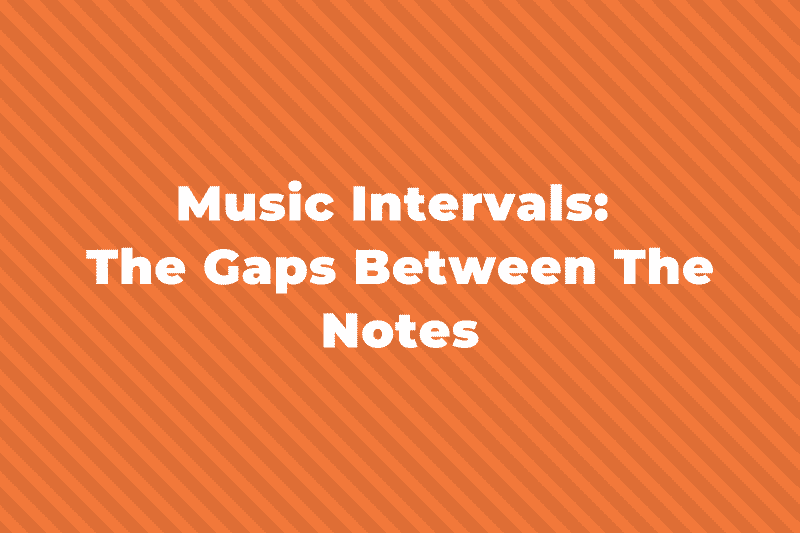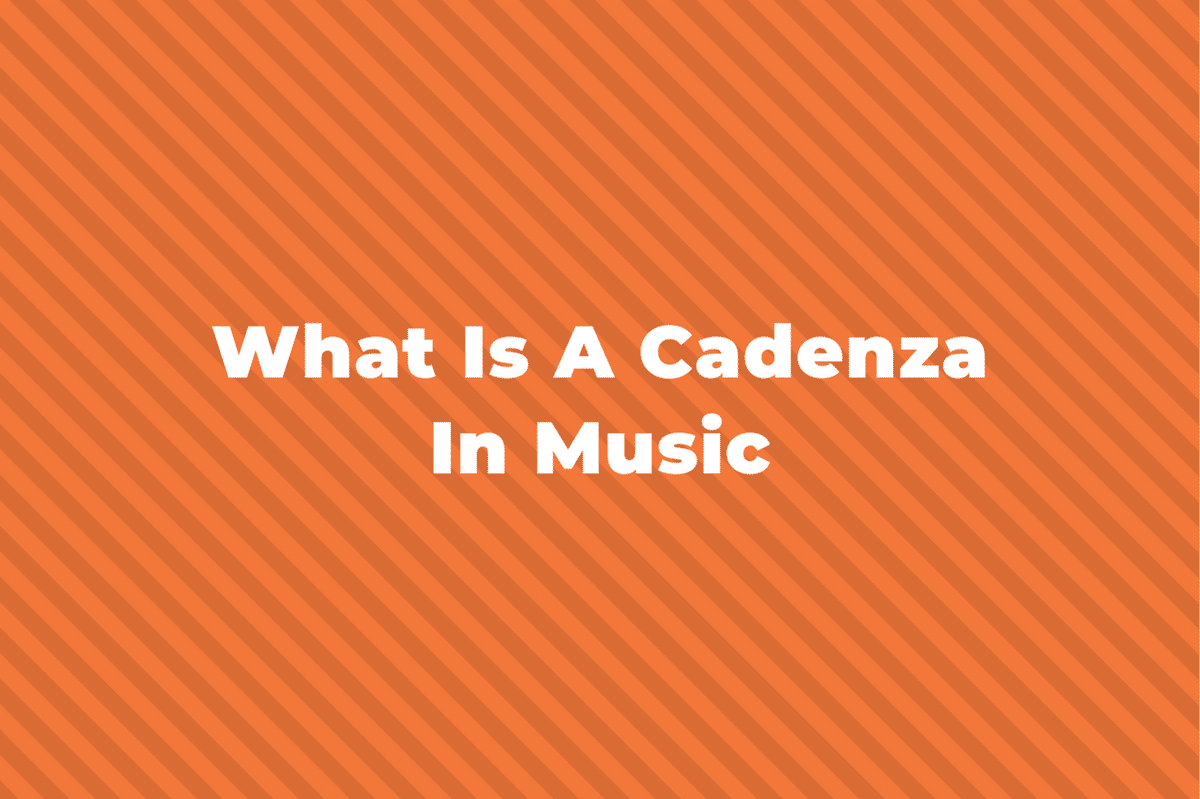If you’ve studied music theory, you have most likely heard the term tritone. It is usually connected with super scary music, like horror film scores or Halloween sounds, or music with a lot of tension that wants to resolve or move away.
In this post, we’ll be answering the question: What is a tritone? How is it formed, and what function does it have in music? A tritone is a specific kind of interval, so to understand it, we should briefly go over what an interval is.
What is an Interval?
When two notes are played at the same time, the distance between them is called an interval.
If the notes are really close together, the interval is small, and if the notes are far apart, then the interval is larger.

As seen here, the first pair of notes are farther apart than the second pair of notes, so the interval is a larger number (7th vs. 2nd).
We can measure intervals by figuring out how many tones and semitones (whole and half steps) there are between the two notes.
A semitone is the smallest interval available in Western music, which is all of the music you would hear on the radio or in a movie theater.
A whole tone is just two semitones put together.
The first pair of notes above is E – D.
These notes are 10 semitones, or 5 whole tones, apart.
The second pair of notes, A – B, are 2 semitones, or 1 whole tone, apart.
Names of Intervals
However, in order to label the intervals, we have to know the letter names of the notes.
In music, we use the letters A – B – C – D – E – F – G – A – etc. to label the notes:

These notes are always labelled in this order – for example, if you have a D and you go up one note you always get an E (maybe Eb or E#, but the letter is always E), and down one note is always C.
The intervals become numbered based on how many notes there are between the pair of notes we’re looking at.
In the E – D pair above, to go from E to D we must go up E – F – G – A – B – C – D.
This is 7 notes, so we call that interval a 7th.
Based on whether the notes are sharp (#), flat (b), or natural (♮), the quality of the interval can change between minor, major, augmented, or diminished.
But, the number always stays the same, and is based on how many notes are in between.
In the A – B example above (on the right), A – B are next to each other on the scale, so we know that their interval is a 2nd.
The Definition of a Tritone
A tritone is a very specific interval – it is the interval made from six semitones, or three whole tones.
The name “tri”tone is the same “tri” that we get words like triangle (a shape with three sides) and triceratops (a dinosaur with three horns) and has its name because of the fact that it is made of three whole tones.
This interval is also unique because it is exactly half of an octave, which is 12 semitones.
For example, the interval F – B is a tritone.
It can be broken up into three whole tones (F-G, G-A, and A-B):


Because it is exactly half of an octave, the inverse of a tritone is also a tritone.
This means F ⇨ B and B ⇨ F are both tritones.
This is the only interval for which this is true.
For example, C ⇨ A is a 6th and A ⇨ C is a 3rd.

Technically F ⇨ B is an augmented 4th, and B ⇨ F is a diminished 5th, but those are what we call enharmonic equivalents, which means they are written as two different things but produce the exact same note or notes.
Tritones in Scales
The example of an F ⇨ B tritone is probably the most widely-used example, and it is because it is found in the C Major scale, the most popular scale:

In fact, in every Major scale, the 4th note and the 7th note will form a tritone, and specifically an augmented 4th.
In E Major, for example, the 4th is A and the 7th is D#, and A ⇨ D# is a tritone.
In a natural minor scale (also called the Aeolian mode), the tritone is between the 2nd and the 6th.
In C Minor, this would be the diminished 5th, D – Ab.
In the Dorian mode (a minor scale with a raised 6th), the tritone is between the 3rd and the 6th.
In F Dorian, this would be Ab – D.
In the Mixolydian scale (a major scale with a lowered 7th degree), which creates a dominant chord, the tritone is found between the 3rd and the 7th.
In A mixolydian, this would be a C# – G interval.
In a scale within the Lydian mode, the tritone is found between the 1st note and the 4th.
So, in G lydian, the tritone would be G – C#.
In a Phrygian mode scale, the tritone is found between the 2nd and the 5th.
In D phrygian, this would be an Eb – A tritone.
Finally, in the Locrian mode scales, the tritone is found between the 1st and the 5th.
In C locrian, this is a C – Gb tritone.
As you can see, any and all of the main diatonic scales you will see in music have exactly one tritone in them, though they are all in a different place.
What are Tritones Used For?
The main use of a tritone in music is to create instability and tension, and then to resolve this tension by moving from a tritone to the next chord in the progression.
This motion of tension and release gives a weight and a significance to the chord after the tritone, and it is often that this chord is the tonic chord of the piece of music:

This is a very typical use of a tritone – the G7 chord (G – B – D – F) has a tritone formed by the B – F interval, and that interval resolves via contrary motion (one goes up and the other goes down) to the C and E of the C Maj chord.
The helps strengthen the dominant function of the G7 chord in resolving to the tonic C chord.
Another use in music is to create a feeling of unease or evil in the music.
This was especially the case in Classical music, and the tritone was called “diabolus in musica” (“the devil in music”) in the 18th and 19th centuries.
For example, it is used to create a theme for Hell in Liszt’s “Dante Sonata”:
Examples
There are many famous examples of tritones used in popular music.
At the beginning of the theme song for The Simpsons, the opening “Simpsons” vocal cue has a tritone in it:
The songs “Cool” and “Maria” from the show and film West Side Story both have many tritones in them.
“Cool” especially uses it frequently at the beginning of the piece:
Both of the rock songs “Purple Haze” by Jimi Hendrix and “YYZ” by Rush open with a guitar alternating between two notes of a tritone:
That’s All for Tritones
We hope that was an informative post, and that you can now recognize tritones when you hear them, and know how and why they are used in music.



